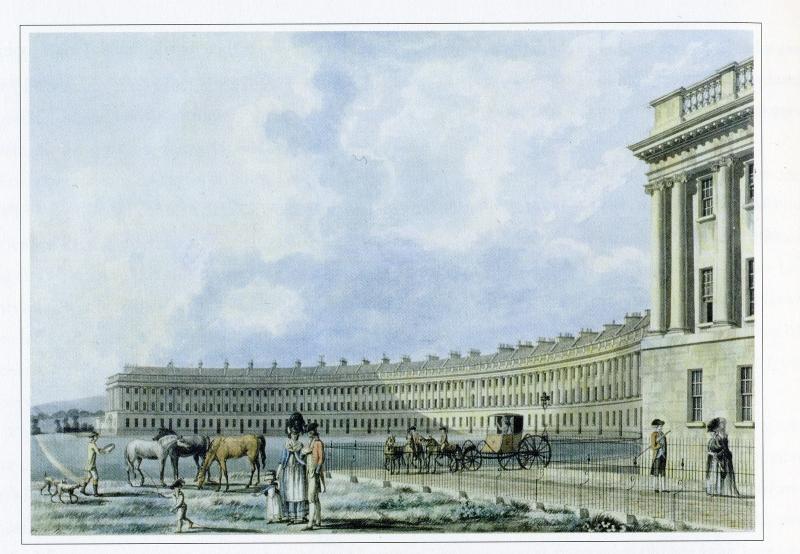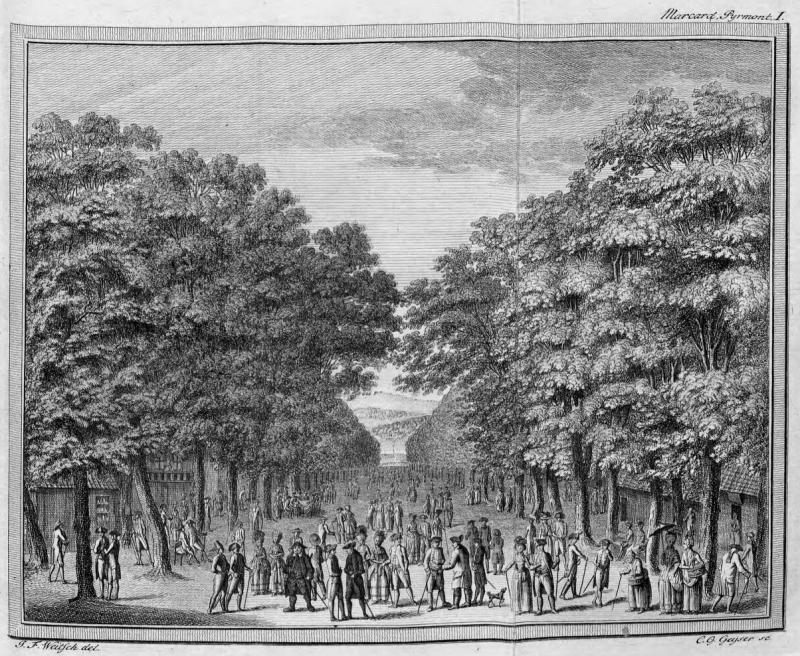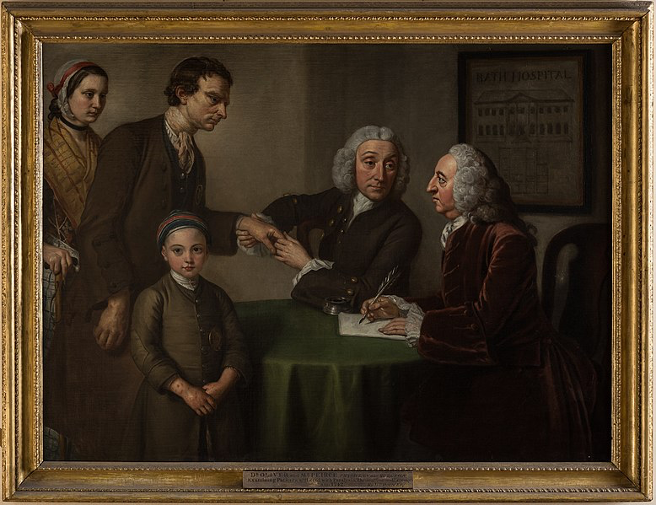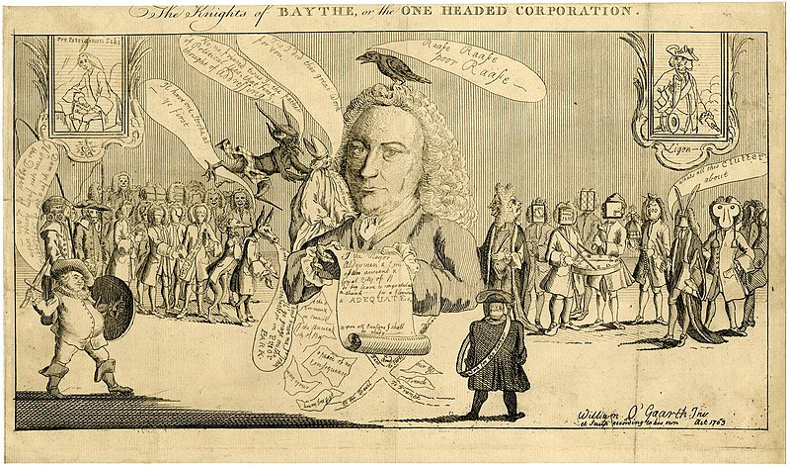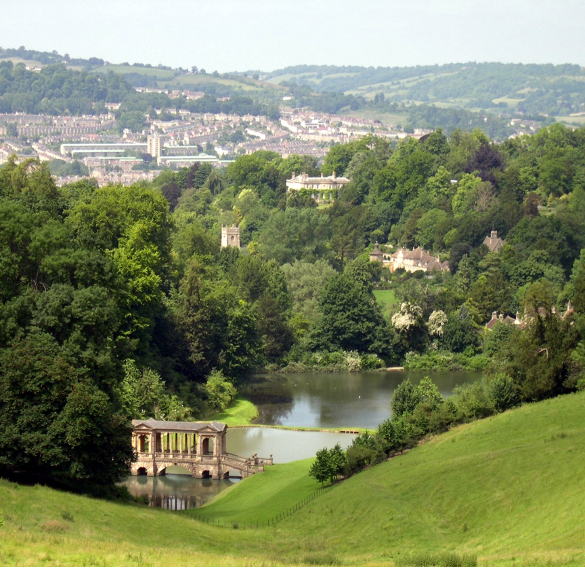Résumé
Bath and Pyrmont were each renowned for their waters in the long eighteenth century. Bath set up an innovative model of spa sociability that supposedly exemplified the main principles of an ‘open society,’ while Pyrmont also defined a new approach to spa life but along different lines. This comparative entry seeks to outline the contours of a transnational spa sociability in four major aspects of ‘openness’ i.e., the interplay of sociability and health, the paradox of regulation and freedom, the transformation of the self in a specific environment and the role of celebrity in the emergence of new communities.
Spa sociability is very often considered as a paradigm of an ‘open society.’ Openness for Neil McKendrick in the Birth of a Consumer Society. The Commercialization of Eighteenth-Century England1 relies on a flexible and open political and social system and fosters a culture of innovation. By this standard, eighteenth-century Bath is a case in point, as visitors were particularly struck by the novelty of its Palladian architecture and simultaneously by its ground-breaking organization of leisure. A similar yet distinct pattern can be observed in the German spa of Pyrmont, where the social system in the heterotopia of the spa involved the loosening of the strictures of the estate-based society of the German states of the eighteenth century,2 yet not abandoning them entirely. Simultaneously, Pyrmont functioned as an integrative regional hub for sociability where people from different German principalities as from other countries could mingle in the absence of a central court or national political capital, which also fostered artistic and literary creativity.
***
Sociability and health: spa medicine and openness
Bath started to innovate at an early stage through the nature of the cure. Taking the waters was no longer principally associated with bathing, but it also involved drinking them, as recommended by Dr John Jones in The Bathes of Bathes Ayde (1572) and Dr William Oliver in A Practical Dissertation on the Bath Waters (1707). Hence the role of the Pump Room as a prime site of sociability with its social activities that closely linked health with entertainment: exchanging news, gossiping and discussing one’s ailments were the staple diet of invalids and those who accompanied them. Works of fiction, letters and diaries show that illness had a new visibility and was no longer stigmatized.3 Yet if health could bring people together it could also be deeply divisive, as innovation in sanitary matters was fiercely resisted, as illustrated by the sulphur controversy4 or by the hostility to Smollett’s Essay on the External Use of Water (1752).5
- 3. For instance, Christopher Anstey, The New Bath Guide, ed. Annick Cossic (Bern, Oxford: Peter Lang, 2010), letter XII, l. 81-82, p. 146. Also, The Expedition of Humphry Clinker [1771] (Oxford: Oxford University Press, 2009), p. 39.
- 4. See Annick Cossic, Bath au XVIIIe siècle. Les fastes d’une cité palladienne (Rennes : Presses universitaires de Rennes, 2000), p. 41.
- 5. An Essay on the External Use of Water (London: M. Cooper, 1752), p. 22.
The sociological side of an open society meant more opportunities to cross social boundaries: this was only partly true in Bath, since the very poor were hidden and treated differently, as appears for instance in this painting by William Hoare, showing a poor child exhibiting a metal badge, the sign that he was eligible for free care, but a potential source of stigmatization.
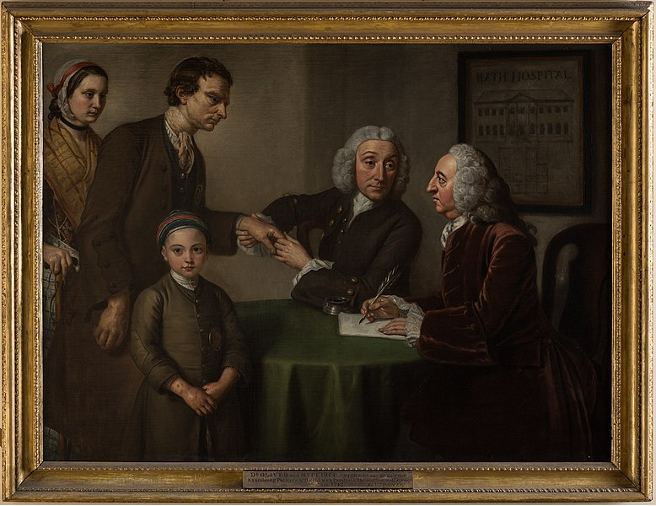
The official openness of Bath contrasted with the determination of the Corporation to control the poor and keep criminality at bay.6
In health matters, Bath built its official image as a place of physical and mental restoration thanks to the competence of its doctors. Those that settled there were famous through their patients and their correspondence with them but also in many cases through their medical treatises, which established a dialogue with the public. A very good illustration of this trend is provided by George Cheyne, who wrote an Essay of the True Nature and Due Method of Treating the Gout (1720) in which he enumerated the components of the Bath waters. Towards the end of the century, Dr Makittrick Adair’s essay, Medical Cautions. For the Consideration of Invalids: Especially Those Who Resort to Bath (1786), formally underlined the link between fashion and illness. Yet the ‘openness’ of these theories is to be set against the existence of secret medical networks7 bent on exploiting the gullibility of too many patients, in behind-the-scenes transactions, by promoting a drug culture that induced dependency and was rarely resisted.8
- 6. See Annick Cossic, ‘L’Utopie palladienne à l’épreuve du crime à Bath au dix-huitième siècle’, François Gavillon (ed.), Ville et Crime, Les Cahiers du Ceima (vol. 2, juin 2003) p. 30-34.
- 7. See Tobias Smollett’s, The Adventures of Ferdinand Count Fathom [1753], ed. D. Grant (London: Oxford University Press, 1971), p. 243-250 and The Adventures of Peregrine Pickle [1751], ed. J. L. Clifford & P-G. Boucé (Oxford: Oxford University Press, 1979), p. 373.
- 8. See Anstey, The New Bath Guide, letter IV, A Consultation of Physicians, p. 91-107.
Water cures had long been a fundamental part of spa visits, and those in central Europe with renowned springs, in particular Pyrmont, owed their reputations to the belief in the quality of their waters.9 Drinking thermal mineral water for its purported medicinal properties, was the predominant form of taking the waters in German spas from the mid-seventeenth century until the early nineteenth, which suggests the transnational nature of spa practices.
Word of the use of the chalybeate Pyrmont waters, long celebrated as a medicinal libation,10 had spread to Britain by the early eighteenth century, encouraged in part through personal links and correspondence. Praise for these waters, both at the spring and bottled, appeared in print no later than 1717. This understanding was popularized in Britain by an English translation and adaptation of Johann Philipp Seip’s 1717 German description (1733), which included instructions for both drinking and bathing, with a typical admonition to always first consult a physician, even if visitors often chose to do otherwise.11 Seip, himself a member of the Royal Society, was court physician at Waldeck-Pyrmont and the medical supervisor of the spa. His works were mainly focused on the medicinal efficacy of the Pyrmont waters for a range of ailments more than the ever-growing sociability that was taking place at the spa.
- 9. W. Amelung and G. Hildebrandt, ‘Zur Geschichte der Bäder- und Klimaheilkunde‘, Christoph Gutenbrunner, Günther Hildebrandt, (eds.), Handbuch der Balneologie und medizinischen Klimatologie (Berlin, Heidelberg: Springer, 1998), p. 755.
- 10. See Georg Bollmann, Kurtze Beschreibung des Pyrmontschen SaurBrunnens (Rinteln: Lucius, 1661), available online through the Münchener Digitalisierungszentrum, https://mdz-nbn-resolving.de/details:bsb10922678.
- 11. Johann Philipp Seip, A Brief and Distinct Account of the Mineral Waters of Pyrmont (London: A. Millar, 1733), German original edition, Neue Beschreibung der Pyrmontischen Gesund-Brunen (Hanover: Förster, 1717).
By the mid-eighteenth century, the experience in Pyrmont came to be one less focused on curing, but to an equal or greater extent on the sociable and fashionable. Medical guidebooks, while hardly objective, reflected what appeared important to the visiting public. Most notable is the work by Seip’s successor at Pyrmont, Heinrich Marcard, published in several German, French and English editions after 1784.12 Marcard highlighted sociability alongside medical advice. Central for both their sociable and salubrious properties were the pump room, with its rituals of drinking water and making small talk (including about illness, politely), as well as the promenade and surrounding nature. Seeking to emphasise the attractiveness of the spa for sociability among the healthy and well-to-do, Marcard somewhat implausibly claimed one hardly saw truly ill people. Similarly, the middling orders, poor peasants and often Jews were shunted aside in Pyrmont (as in other spas), excluded from the finer spaces and permitted to use facilities such as the springs only during less agreeable hours to avoid encounters with more respectable patrons.13
- 12. Heinrich Matthias Marcard, Beschreibung von Pyrmont (Leipzig: Weidmann, 1784, 1785); Description de Pyrmont, traduite de l'allemand de Mr. Marcard (Leipzig: les héritiers Weidmann et Reich, 1785); Short Description of Pyrmont (London: Johnson, 1788).
- 13. See Reinhold P. Kuhnert, Urbanität auf dem Lande: Badereisen nach Pyrmont im 18. Jahrhundert (Göttingen: Vanderhoeck & Ruprecht, 1984).
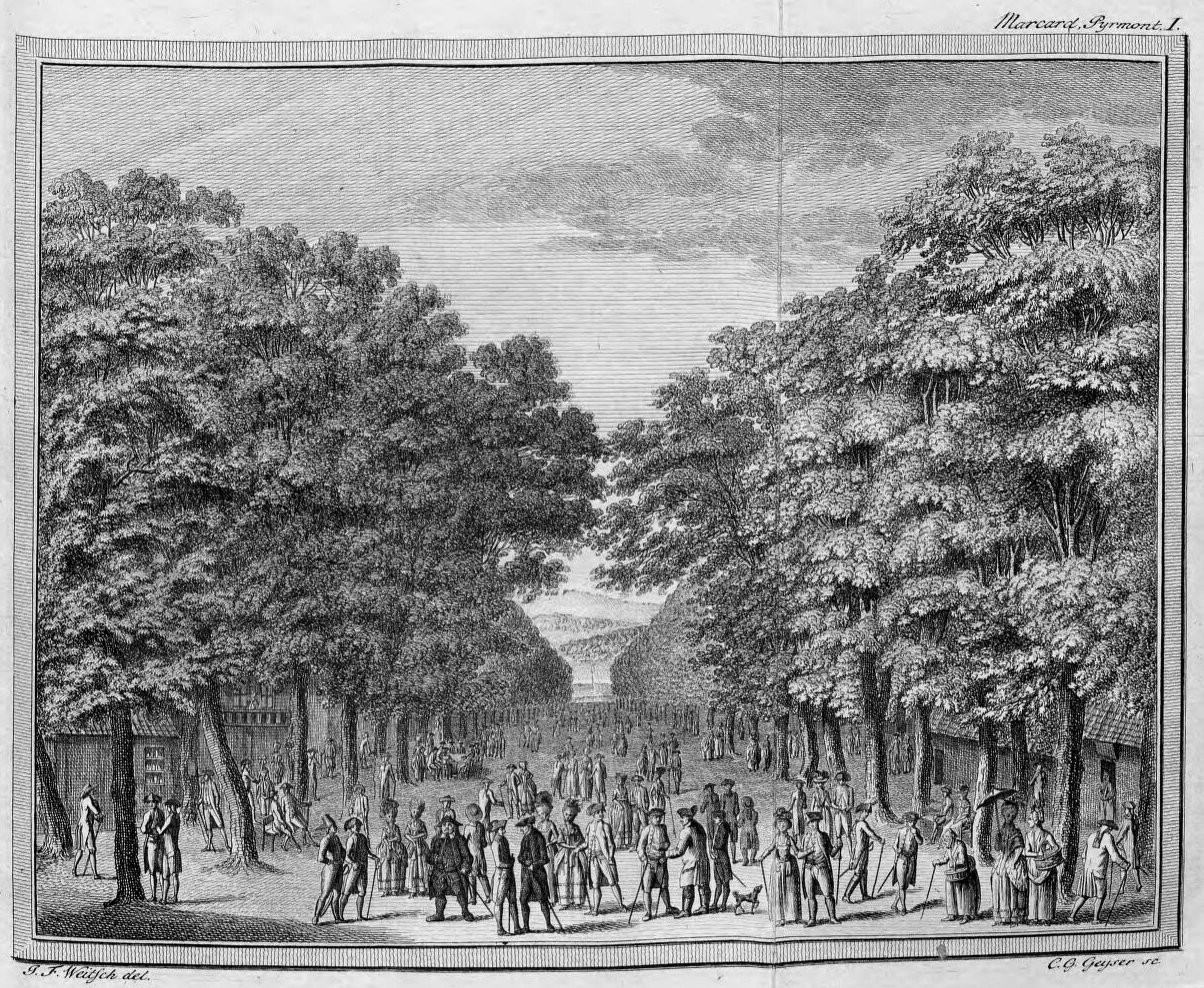
The paradox of regulation and freedom: leisure and the Master of Ceremonies
As shown in the entries on Bath and Beau Nash, the visit to the spa was part of a quest for happiness: invalids and those that accompanied them sought an improvement in their physical condition and psychological pleasure. Their psychosomatic disorders could only be relieved by the combined experience of novelty and freedom. The visitors, welcomed by the Bath bellringers and the Bath musicians (Cossic, Bath, 102) regardless of their rank, expected immediate emancipation from their customary routine and a degree of refinement of their manners. Yet they were immediately put under the firm guidance of the Master of Ceremonies and had to comply with a set of eleven rules that aimed at the harmonious cohabitation of the sexes and social classes. The clock-like organization of leisure together with the treatment prescribed by their Bath doctors firmly reined in all attempts at spontaneity.
The new type of sociability that they experienced in the spa, mixed-sex sociability, imposed refinement and theatricality in the Parades, the Assembly Rooms, the Pleasure Gardens, the coffee-houses, put a new burden on the newcomers, that of conforming to a specific ritual with its own set of laws. They were thus forced to swap a previous code of behaviour – chivalric for the members of the aristocracy, popular for the rest – for a more egalitarian one that also had its own constraints.
Yet in Bath the power of the Master of Ceremonies, the ‘King of Bath,’ gradually diminished over the course of the century, in the post-Beau Nash era, when the authority of the spa monarch came to be challenged. Nash had been a self-appointed unpaid Master of Ceremonies, and after his reign the issue of vesting power in the hands of a single individual was forcibly raised. The trend towards openness was thwarted by a desire for a more private form of entertainment and for more exclusiveness. The discovery of Beau Nash’s double standards, as he both posed as a protector warning gambling visitors against the pitfalls of the gambling frenzy and yet secretly belonged to a gang of sharpers, undoubtedly contributed to the undermining of the function.14 His immediate successors, James Collett, then Samuel Derrick, proved far less successful in the forging of social cohesion in Bath: ‘[Derrick] did not possess Beau Nash’s gift for pleasing everybody.’15
The role in regulating sociability and easing the frictions that might arise played by the Master of Ceremonies seems to be the greatest and perhaps most English innovation in spa sociability. It was not found in German spas, nor in Bath’s imitators in North America. While Pyrmont had a prominent spa-physician (Brunnenarzt), as did many German spas, his role was in no way comparable to that of Beau Nash in Bath. Guests to a large extent were left to organise their own social affairs or to participate in privately arranged events. Johanna Schopenhauer, familiar with both English and German spas, observed in 1803 that an English Master of Ceremonies ‘cares for everything … and everywhere insists on the strict observance of the rules.’ German spa physicians, who in the main cared for medical matters, bore only in a few cases ‘a distant resemblance to the English Masters of Ceremonies,’ whereas ‘proper spa physicians were entirely absent in England.’ This greater degree of regulation of social life meant for her that life in English spas was far more organized and pre-determined than in German ones.16
- 16. Johanna Schopenhauer, Erinnerungen von einer Reise in den Jahren 1803, 1804, und 1805, Vol. 1 (Rudolstadt: Hof- Buch- und Kunsthandlung, 1813), p. 240-41, 244. https://archive.org/details/bub_gb_VuWSYo5j20QC
This is not to say that social regulation was lacking at Pyrmont. In German lands, spas were typically built for the prestige (and profit) of the local prince and served as summer extensions of court. As state entities, spas were placed under administrative control. In place of a Master of Ceremonies there was a set of ordinances (Brunnenordnungen or Promenadenordnungen), enforced by spa wardens (Brunnenpolizei), and mainly concerned with maintaining the apparent ‘respectability’ of social spaces, where unwritten rules set the tone of behaviour. These were generally clear enough when it came to the social exclusion of the visibly poor from most public spaces, yet the boundaries were unclear when it came to well-dressed members of the bourgeoisie, who might well doubt whether they belonged in these shared spaces at all.17
- 17. See for example Georg Christian Sponagel, Meine viertägigen Leiden im Bade zu Pyrmont [1809] (Pyrmont: Georg Uslar, 1824). https://hdl.handle.net/2027/hvd.hn6a4p.
The aristocracy tended to keep its own company, admitting at times members of the highly educated bourgeoisie to their circles, but the noble-common hierarchy largely remained. The strict social rules that applied at court might be relaxed, but shared social spaces did not necessarily entail an equalisation of status.18 This inconsistency between the ideal of an open sociability celebrated by the likes of Marcard and the reality of Pyrmont led Justus Möser to write to the physician and author in 1784, suggesting that Pyrmont might benefit from having a kind of master of ceremonies or ‘Bath King’ (Brunnenkönig) itself19 in essence, to tame the haughtiness of petty nobles.
- 18. See Karl Wood, ‘The Spa as Sociable Space: a Comparative View of Baden-Baden and Saratoga Springs,’ in Annick Cossic-Péricarpin and Emrys D. Jones (eds.), La Représentation et la réinvention des espaces de sociabilité au cours du long XVIIIe siècle, Transversales vol. 7 (Paris : Le Manuscrit, 2021), p. 305.
- 19. Justus Möser, letter to H. Marcard, 1784, quoted in Ute Lotz-Heumann, The German Spa in the Long Eighteenth Century (London: Routledge, 2022), p. 249.
The spa as a place of identity formation: the birth of a new self?
The overall context of innovation was bound to affect the self who was confronted with the various challenges triggered by a strictly codified type of sociability. Spa sociability involved a degree of self-exhibition, social composure in public spaces, the display of wit, mastering the art of conversation between the sexes on various sociable occasions such as public breakfasts or shopping sprees, as the self was becoming a modern consumer.
This forced togetherness came at a price and led sensitive individuals to reject spa sociability altogether and nostalgically look on the traditional ideal of retirement which was renewed with the fashioning of the romantic self. Hannah More provides a striking example of a woman who had a love-hate relationship with Bath, where she returned again and again, attracted and repulsed by the multiple encounters, across gender and class, that she could have there. Interestingly, she described ‘[her] house at Bath [as] for many winters constantly open to as many as resided there.’20 She subverted the class-oriented, gender-biased model of spa sociability that had prevailed in Bath until the middle of the century to create a new type of sociability that was more politicized, complaining to a friend in 1792: ‘Bath, happy Bath, is as gay as if there were no war, nor sin, nor misery in the world.’21 She stepped out of the private sphere to venture into the battlefield of public opinion, thus emancipating herself from a patriarchal society and creating a new model of spa sociability, based on the active participation of women in the promotion of political and humanitarian causes. If Bath, like other spas, was ‘a site of feminine identity creation’ a place where ‘female alliances were enriched,’22 for men too, albeit differently, it could be formative or destructive.
- 20. Letter to the Rev. Joseph Berington, Barley Wood, 1809, William Roberts, Memoirs of the Life and Correspondence of Mrs. Hannah More (London: R.B. Seeley and W. Burnside, 1836), vol. II, p. 357.
- 21. Letter to a Friend, Bath, January 1, 1792, Memoirs of the Life, vol. I, p. 854.
- 22. Amanda E. Herbert, Female Alliances: Gender, Identity and Friendship in Early Modern Britain (Yale: Yale University Press, 2014), p. 141.
Political issues – the American war of independence, the French Revolution, religious tensions during the Gordon Riots – inevitably unhinged the well-wheeled routine set up by Beau Nash and his successors. They were a major source of discord, but so were well-advertised personal feuds, such as that which opposed two well-known writers, Christopher Anstey and Philip Thicknesse who both lived in Bath.23 Old scores were opportunities for self-assertion but threatened to rend asunder the social fabric patiently woven by the proponents of a Palladian utopia. The Woods themselves had a strained relationship with the Bath Corporation: their idea was to create an entirely new city and thus a new, virtuous citizen.24 Both father and son were convinced that a harmonious environment – they wanted to design a new Vicenza – (Anstey 50) produced new social behaviour where virtue was the rule (Cossic, Bath, 56, 63-64).
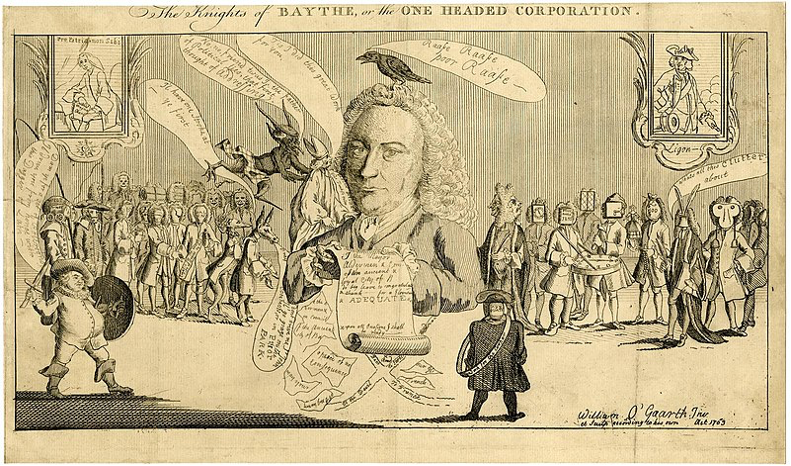
Pyrmont, like many of the prominent German spas of the eighteenth century, played an important role in identity formation, in particular for the educated middling orders. While the reality of spa life could not live up to the ideals of free and relatively equal interaction found in guides and other written literature, the social heterotopia of the spa and its shared social spaces provided opportunities for the formation over the course of the century of a broader educated elite, a sense of an ‘educated estate’ (gebildeter Stand) of enlightened individuals from both noble and middle-class backgrounds.
This was by no means an uncontested and even process. Throughout much of the century, some aspiring middle-class visitors demanded greater inclusion and complained of the distance of the nobility. This was never really resolved in the eighteenth century in Pyrmont, and much of the nobility moved in a separate, elevated sphere, keeping their social inferiors at a distance, even as they may have shared some of the same spaces and attended the same events. Shared social space in Pyrmont, as in other spas, did not necessarily entail an equalisation of status (Wood, ‘The Spa as Sociable Space’, 305).
Nevertheless, through sociability in semi-open circles of friends and acquaintances, the perception of an open sociability was reinforced. These circles, however, were restricted to ‘respectable’ members of the educated elite, frequently educated burghers amongst themselves, but sometimes included associations with members of the nobility, e.g., being invited to join a shared table, as Johann Stephan Pütter reported from a trip to Pyrmont in 1782.25 At the same time, more common tradesmen, lower ranking officials and others unversed in the proper codes or habitus were excluded. This made inclusion in lofty circles all the more exhilarating, while at the same time reinforcing the perception of an open sociability among those who belonged.26
Of particular importance for the formation of these circles and the desire to join them, beyond the doubtlessly important notions of fashion or respectability, was also the wish to be in the orbit of the considerable number of political, intellectual and artistic luminaries who were known to frequent the more fashionable spas such as Pyrmont in the eighteenth century.
Spa sociability and celebrity
The celebrity of Bath in the ‘Age of watering-places,’ a phrase coined by R.B. Mowat in England in the Eighteenth Century (1932), itself contributed to the celebrity of rising stars who made their débuts in Bath and then migrated to London. Bath can boast the spotting of talented artists such as Sarah Siddons who was first acclaimed on the Bath stage,27 Thomas Gainsborough who had a studio there,28 Elizabeth Linley,– later Mrs Sheridan – , Anna Seward who in 1780 won one of the Batheaston literary contests organized by Lady Miller.29 Celebrity (Lilti 15-20) itself can be considered as a new phenomenon and in this respect, Bath revealed to the public quite a number of writers, painters, singers and actors or actresses. Ralph Allen at Prior Park entertained literary figures such as Henry Fielding or Alexander Pope. The spa quite fits in with the definition given by Stella Tillyard, ‘celebrity was about being with others, together, adored in the here and now by an audience,’30 which in the spa made up an ephemeral community of connoisseurs.
- 27. For Sarah Siddons celebrity was a form of enslavement: see Antoine Lilti, Figures publiques : l’invention de la célébrité 1750-1850 (Paris : Fayard, 2014), p. 367-368.
- 28. The fashionable character of portraits is linked with the rise of celebrity. See Lilti, op.cit., p. 21-94.
- 29. See Annick Cossic-Péricarpin & Hélène Dachez (eds.), Les enjeux thérapeutiques et esthétiques de la sociabilité au XVIIIe siècle, Transversales vol. 2 (Paris : Le Manuscrit, 2013), p. 253-254.
- 30. Stella Tillyard, ‘Celebrity in Eighteenth-Century London,’ History Today (vol. 55, June 2005), p. 20-27, here p. 22.
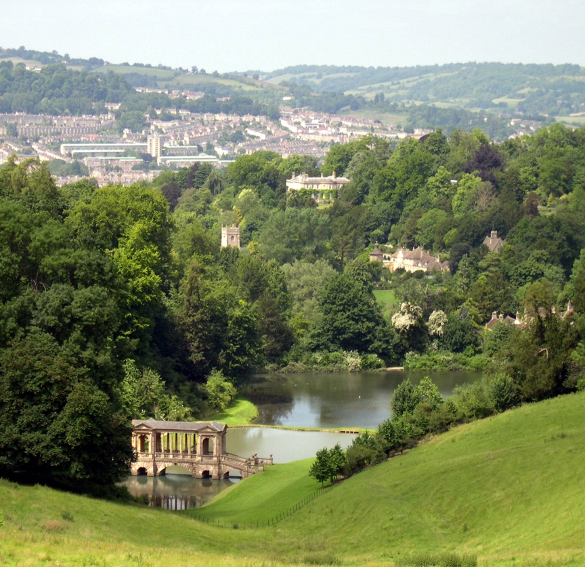
Bath’s celebrity in the long eighteenth century started with a few royal visits, in particular those of Queen Anne, a famous gout sufferer, in 1702 and 1703, followed by eminent members of the aristocracy or of the court. The contribution of Bath to the new celebration of royalty31 is nowhere more obvious than in the Woods’ masterpieces, Queen Square (1728-1736), the Circus, first called King’s Circus (1754-1768), the Royal Crescent (1767-75).
- 31. Linda Colley, Britons: Forging the Nation 1707-1787 (London: Vintage, 1996), p. 209-251.
From an engine of celebrity, Bath itself became an object of fame, whose reputation extended beyond its borders, as it exported its model of spa sociability to other watering places: for instance, the links between Tunbridge Wells and Bath were very close since the two spas shared the same Master of Ceremonies in Beau Nash’s times and for a while after his death.
Pyrmont’s celebrity in the eighteenth century also began with a number of royal visits early in the century. The most celebrated of these perhaps was the visit in 1716 by Tsar Peter I of Russia on his 1716-17 grand tour of Western Europe, but this was hardly an isolated event. This visit was followed several weeks later by King George I, who made a total of ten visits to the spa by 1725. King Frederick the Great of Prussia visited twice, and his successor, Friedrich Wilhelm II held court in Pyrmont in 1796 and 1797. Meticulously kept, guest records in Pyrmont attest to a parade of princes and princesses, dukes and duchesses and other nobles from German principalities and abroad throughout the century. Individually and collectively, these regular visits could not but lend the spa a certain regal lustre.32
- 32. Dieter Alfter, ‘Die Pyrmonter Badegesellschaft. Berühmte Badegäste des 18. Jahrhunderts,’ in Dieter Alfter (ed.), Badegäste der Aufklärungszeit in Pyrmont, Schriftenreihe des Museums im Schloß Bad Pyrmont n° 25 (Bad Pyrmont: Museum im Schloß, 1994), p. 25-27.
The prospect of being near such noble luminaries, perhaps to catch a glimpse of a king or a princess on the promenade, or even to stroll along the same stones as a duchess had only a short time before added to the celebrity of Pyrmont itself. There was of course very little hope for any middle-class visitor of ever directly encountering such lofty persons. This was a different situation in the case of intellectual and artistic celebrities who frequented Pyrmont and other fashionable spas.
The second half of the eighteenth century saw visits by Enlightenment intellectuals such as Moses Mendelsohn and Johann Gottfried Herder, who visited a number of times to seek relief from ailments ranging from a toothache to haemorrhoids. It was in Pyrmont that Herder and Mendelsohn met in person in 1774 through their mutual acquaintance, the poet Gotthold Ephraim Lessing. A circle of student poets formed around the poets Friedrich Gottlieb Klopstock and Matthias Claudius, while other notable guests included the jurist, social theorist and author Justus Möser, as well as women of letters such as Johanna Schopenhauer, Elisa von der Recke,33 and Charlotte von Stein. Wolfgang von Goethe, himself a devoted spa patron, preferred Karlsbad (today Karlovy Vary in Czechia) but visited Pyrmont in 1801, motivated in part by positive impressions of the waters themselves.34 This came, however, just as the fashionable celebrity of Pyrmont was waning, as was its function as a hub for sociability. Pyrmont would see its role and position much diminished, eclipsed by the emerging grand spas of Wiesbaden and Baden-Baden, which grew dominant in the changing nineteenth-century.
- 33. See e.g. Johanna Schopenhauer, Im Wechsel der Zeiten, im Gedränge der Welt: Jugenderinnerungen, Tagebücher, Briefe. ed. Rolf Weber (Düsseldorf: Patmos, 2000); Elisa von der Recke. Tagebücher und Selbstzeugnisse, ed. Christine von Träger (Munich: Beck, 1984).
- 34. See Viola Geyersback and Egan Freitag, ‘Berühmte Badegäste aus “Weimarer Sicht”’, in Badegäste der Aufklärungszeit in Pyrmont, p. 34-49.
***
The organization of leisure in Bath and Pyrmont contributed to the development of new paths for sociability. The cultural landscape of the spa in each of these locales offered opportunities for the loosening of social strictures and facilitated freer forms of interaction, yet neither could fully resolve the tension between the promise of a more egalitarian sociability and more exclusive, class-based impulses which could not be entirely suspended in the eighteenth-century heterotopic spa.
Partager
Références complémentaires
Cheyne, George, The Letters of Dr. George Cheyne to the Countess of Huntingdon, ed. with an introduction, by Charles F. Mullett (San Marino, California: Huntington Library, 1940) and The Letters of Doctor George Cheyne to Samuel Richardson (1733–1743), ed. with an introduction, by Charles F. Mullett [The University of Missouri Studies, vol. 18, n° 1] (Columbia: University of Missouri, 1943).
Köhler, Astrid, ‘Pyrmont von verschiedenen Seiten betretend: Zum literarischen Umgang mit der Heterotopie Badeort um 1800,’ Publications of the English Goethe Society (vol. 84, n° 1, 2015), p. 48-62.
‘Medicine in Bath’, Georgian Cities’ website, 2013. http://www.18thc-cities.paris-sorbonne.fr/Medicine-in-Bath-321.html?lang=en
Mowl, Tim and Earnshaw, Brian, with Spence, Cathryn, Architect of Obsession. John Wood and the Creation of Georgian Bath, revised edition (Bradford on Avon: Stephen Morris, 2022).
Peach, Robert E. M., The Life and Times of Ralph Allen of Prior Park, Bath, Introduced by a Short Account of Lyncombe and Widcombe (London: D. Nutt, 1895).
Pope, Cornelius, The New Bath Guide; or Useful Pocket Companion (Bath, 1762-1768).
Pütter, Johann Stephan, Selbstbiographie, vol. 2 (Hildesheim: Olms Verlag, 2012). Original available online through the Münchener Digitalisierungszentrum, https://www.digitale-sammlungen.de/view/bsb10065981?page=304
Slare, Frederick, ‘A Short Account of the Nature and Vertues of the Pyrmont Waters,’ Philosophical Transactions of the Royal Society (vol. 30, n° 351, Jan.-Mar. 1717), (New York: Johnson and Kraus, 1963), p. 564-570. https://hdl.handle.net/2027/uva.x001264199
Vasset, Sophie, Murky Waters: British Spas in Eighteenth-Century Medicine and Literature (Manchester: Manchester University Press), 2022.
Viviès, Jean, George Cheyne, médecin de son siècle, 1672-1743. Malaise dans la civilisation anglaise (Aix-en-Provence : Presses universitaires de Provence, 2023).
